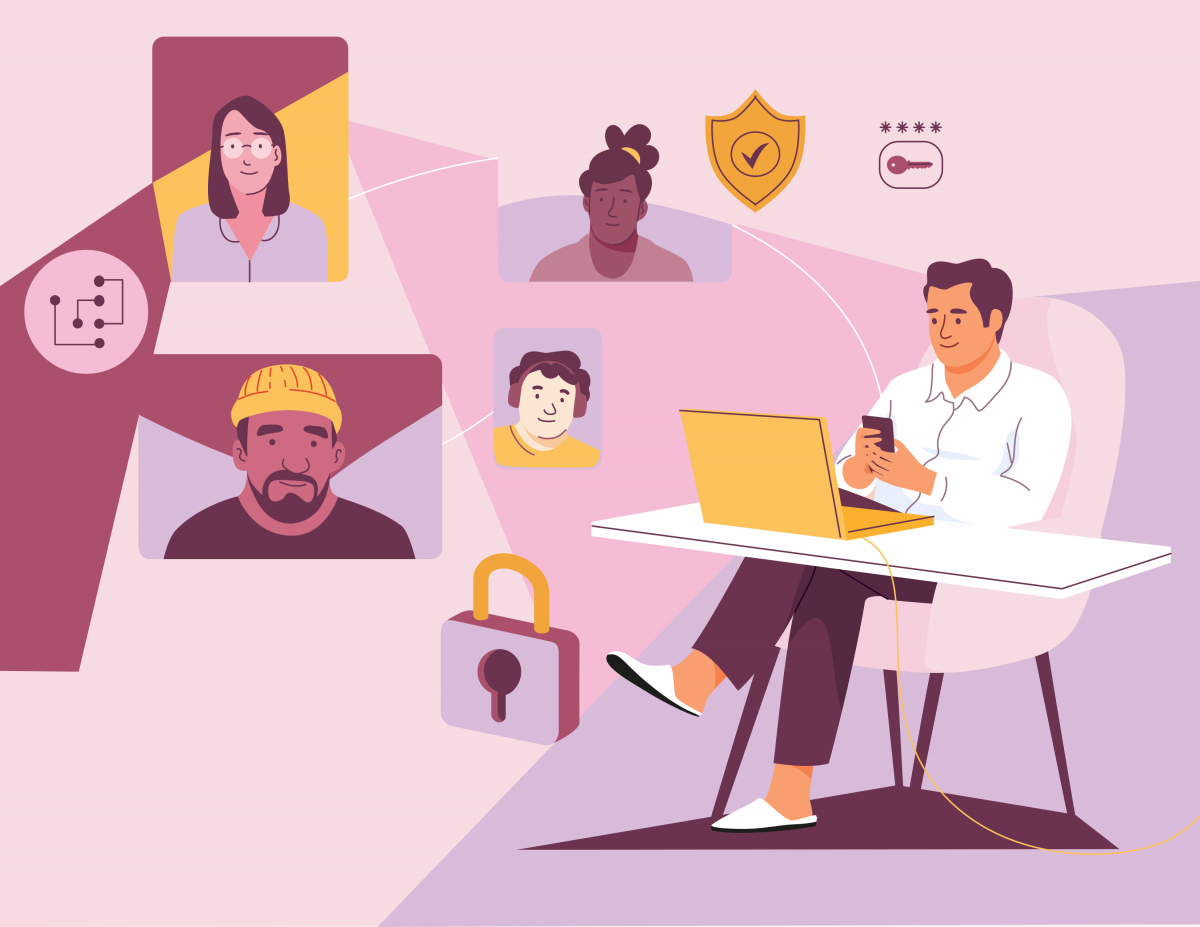
The future of work is partly or fully remote, especially for tech-led professions. According to McKinsey and Company, more than half of employees want more flexibility from their employers and want to work remotely more than from the office. The pace of attitude change has been fast, even if your usual way of working stayed the same.
Effective collaboration is an ongoing challenge for many remote teams. Businesses of all sizes have been known to reach for the next new collaborative tool on the shelf, expecting it to bring minds together for a lightbulb moment continually. Thinking back over my career in cybersecurity, I believe it’s not the tools that make or break collaboration. But I have a few ideas on what the critical cruxes of collaboration might be.

Secure Microsoft Office 365
Collaboration security
Advanced, all-in-one threat protection for Microsoft Office 365’s communication and collaboration services
Let your empathy drive how you work
I first worked with others remotely at the beginning of the 2000s. The tech was basic back then: A mobile phone, laptop and dial-up internet. I was giving on-call technical support for an internet service provider’s security team. Waking up in the middle of the night to giving out-of-hours support was an abrupt introduction to working with others online.
Most people would wake me and launch into a description of an incident ticket, immediately asking questions while I juggled my mobile phone, laptop and coffee cup. But there was one person who’d thought about the person on the other end of the phone. They would call to wake me up, say they’d ring back in five minutes and hang up. It meant I was set up and awake when we started working on the problem together. It made a big difference to my ability to think about an issue in the right frame of mind and not make it worse by being half asleep.
Shift the barriers to deep focus
For over a decade, I worked as a penetration tester in different teams and companies, either onsite or remotely. I would mimic a cybercriminal and try to compromise a software implementation or do general technical audits, aiming to find as many issues as possible.
Often this would be as part of a team. Some organizations I worked for insisted everyone work from the same location, while for others, everyone worked remotely.
Penetration testing benefits from seeing someone else’s screen and easily sharing ideas around a group. A chance comment by a colleague might give you a clue on your target. But it also benefits from long periods of concentration, learning on the fly and going down rabbit holes without being asked what you’re doing.
I usually preferred the work-from-home teams. It was easier to talk to a colleague over the phone and email screenshots remotely than to focus intently in a busy office. But for others, having team members close at hand and the feelings of camaraderie were most important.
Wherever your team is and what type of people make it up, management must play a crucial role in making sure everyone has a chance for deep focus. University of California’s Professor Gloria Mark is one academic asking the price of an interruption. Her paper, The cost of interrupted work: More speed and stress, concludes that distracting someone from their work doesn’t slow them down, but means they produce poorer quality work and feel more frustration and stress.
Use face-to-face time for what it’s best for
My last full-time job showed me how the remote work approach is more important than tools or factors like how often staff meet. I was giving technical expertise for cybersecurity product sales.
Our collaboration tools weren’t great. There was the usual nightmare of email and calendar software, partly integrated with more software for phone calls and text chat. Collaboration was mainly over conference call rather than video. I usually worked remotely, but some of the team used offices shared with colleagues or the wider company full- or part-time (known as hybrid working.)
Even though I saw and met colleagues less often, I always felt part of the team. I believe that part of that team feeling came from the smart use of tools: People promptly replied to communication and managed their out-of-office notifications and calendars well.
Management also drove the team feeling by continually staying in touch and freely giving both praise and suggested improvements.
Physical meetings were infrequent but scheduled. They were both practical and social, giving a chance to get to know colleagues outside text or phone interactions.
Colleagues and associated teams made the most of face-to-face meetings. The sales team always made sure they spent time together before and after visits to customers and potential customers.
Consider team skill mix and have a driving purpose
Recently, I worked with a small team to organize the first game-based cybersecurity conference, Play Secure. It was hard establishing a new conference around a novel theme. And with the conference being entirely online, we needed to ensure it didn’t feel like just another set of webinars.
For fully remote working with a new team, it went especially well. I think the team’s success secret was the right combination of interpersonal skills and a shared sense of mission. We didn’t get so burnt out through increased online interaction and were motivated enough by purpose to overcome the limitations of the tools.
Use your tools on a strong foundation
Lockdowns led to my becoming a fully remote worker, which fits the needs of my customers spread across different time zones. My work is usually intensive with short periods of decision support for customers, then intervals for research and consideration. Projects can have different delivery speeds. You need to adapt to others’ work demands and availability and establish rapport over a simple video call.
In this case, I think tools make a difference. It’s hard to find a positive aspect to the pandemic, but the mass adoption of video conferencing has helped my work. It lets me give timely advice to customers without being limited by travel time and cost.
When deciding to go remote-first
Throughout my career, I see online collaboration has been most effective when I, and those around me, have thought about how we use the tools to emphasize our advantages and negate the tools’ weaknesses.
If you or your team want to go remote-first, think through what has worked for you and what hasn’t. Take staff preferences into account. Meeting in person once a week, once a month, or once a quarter can greatly affect team wellbeing and cohesion.
It’s easier for a distributed team to come together than for an in-office team to work apart and avoid interruptions successfully. With the savings on the costs of office space and time spent commuting, opportunities abound for thoughtful organizations to enjoy the benefits of remote work by forging their own ‘new normal.’


